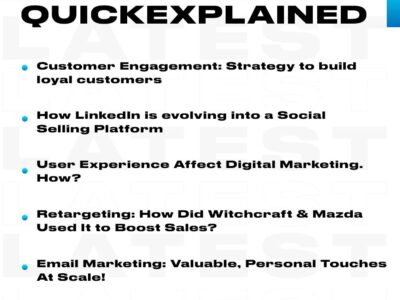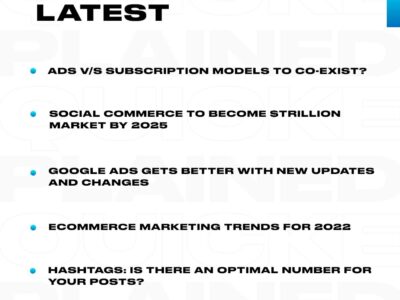People have gotten used to seeing ads everywhere they look. Because of this, marketers must find new ways of attracting consumer interest and attention, or else their products will continue to go unappreciated by potential customers.
What is an Interactive ad?
Interactive marketing relies on people’s feedback to receive analytical data to improve their methods. The right implementation of this technique is critical to its success. Interactive display ads are all about encouraging consumers to interact through the medium of the internet. This way, companies can engage and interact with their client base in new ways that were once impossible or difficult to achieve.
Types of interactive ads
Interactive Facebook Ads
Facebook allows you to engage with your audience in a whole new way. They have features like polls and trivia, which prompt users to answer or participate in something interactive. These options can also be used in Facebook Live videos, allowing you to interact with your viewers right at that moment. You are free to have as engaging a discussion as possible!
Interactive Display Ads
Interactive Display Ads are rich ads created using high-definition images and multimedia capabilities. These display ads drive activity among consumers and compel them to click or watch your ads. Moreover, they have the power to draw in disparate demographics at a time based on the creative content you create.
Lightbox Ads
Lightbox ads are standard banner ads you’ve probably seen around the Web that expand into full-screen advertisements. These banner ads usually include video, making them more appealing and engaging to viewers. That’s why they’re called lightboxes!
Spin and Win Ads
Spin and Win is an interactive display ad that offers rewards. A highly engaging ad lets users spin a wheel for a chance to win coupons from retailers of their choice. Consumers have a real desire for loyalty points, influencing their emotional triggers to persuade them into response-driven behaviour.
Carousel Ads
Carousel ads are appealing to consumers because they are interactive. By interacting with these ad formats, users can view different images within a single ad. This enables advertisers to give their potential clients more information about their businesses, creating brand Awareness without taking too much of their time.
Benefits of Interactive Display Advertising
Interactive ads allow for more in-depth brand engagement by directly engaging with their customers. These immersive rich media ads can turn traditional advertising into an interactive activity for the viewer, making them more memorable and effective.
- An interactive display ad campaign helps increase gamification for your brand by increasing the number of times users engage with your advertisements.
- This advertisement has features that encourage viewers to spend longer time on the site, hence increasing engagement.
- Interaction through these advertisements also gives you a better understanding of your audience and recruiting them as customers in the future.
- Time spent interacting with ads also means more data is gathered about consumers. It’s a type of Performance Marketing, generating more far-reaching ideas and information about future campaign plans.
How to Incorporate Interactive Advertising?
Using interactive advertisements in campaigns can apply to many stages of the funnel. Whether you choose to incorporate them when trying to garner interest at the top or encourage a conversion at the bottom, it’s good to decide beforehand which approach best suits your company.
As a result, it’s essential to think about how you want to execute your campaign before it goes live!
Example:
Let’s consider an ad for a handbag. Several options and features would appeal to different members of the target audience. Some might not care about having a sling to carry it easily, while others may check the leather quality or the bag’s many features. A customer will look through the ad to discover what suits their needs and desires. Because this ad is interactive, you can outline four distinct features of a single product without having text present on the ad, saving on ad space and directly appealing to a large audience.
Interactive ads are yet another example of where big data comes into play. What distinguishes interactive ads from traditional commercials is their ability to capture customers’ attention while also providing vital info that advertisers need to know about their customers.








Comments